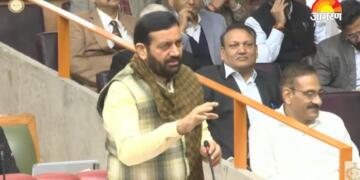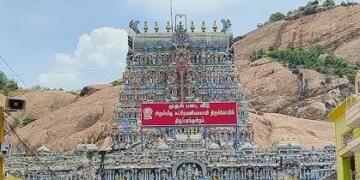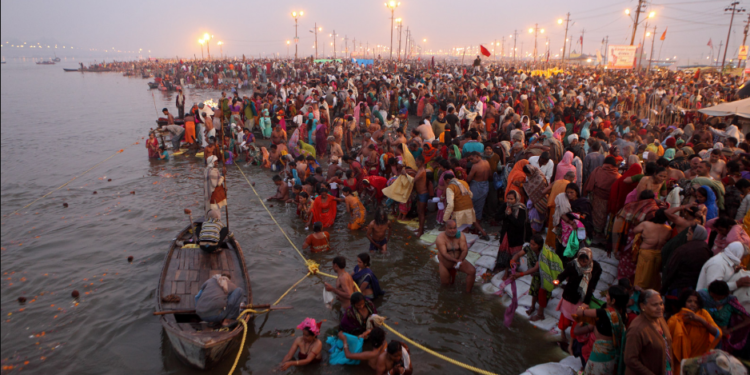The hyper-westernized elite class of India has become habitual of replicating western societal themes for the country. “Religion is the opium of the people”, one of the most popular phrases of west frequently attributed to Communist ideologue Karl Marx is being forcefully applied for India despite the fact that there are no empirical evidences to support this. Whenever any big religious procession takes place in the country, the critics get a chance to argue that poor and unemployed people are the main participant. During the ‘Kanwar Yatra’, the elites write how these months’ long pilgrimages are result of mass unemployment and poverty.
The same happens during the Kumbh Mela when crores of people assemble to take the holy dip. The ‘pink newspapers’ gets flooded with articles with the argument that why this congregation is symbol of mass unemployment and poverty in the country. Mahesh Vyas, Managing Director and CEO of Centre for Monitoring Indian Economy Pvt Ltd, in an article in Business Standard, argued that there is a direct link between religiosity and deprivation. In western countries the empirical evidence of ‘upper class being relatively less religious’ has been found, the ‘colonized mind’ of Vyas argued that the same should be true for India. Although, there is no empirical evidence for his proposed theory or fantasy.
A study conducted by Lokniti research programme at the Centre for the Study of Developing Societies (CSDS) found that there is no class division in religious participation in India. The Survey asked the people whether they consider themselves very religious, somewhat religious, or not religious at all. More than 90 percent of Hindu population called themselves religious with 31 percent opted for ‘very religious’ and 60 percent for ‘somewhat religious’. In the same survey, it was asked whether the people attended religious processions or gatherings in recent years. More than half (51 %) of the Hindu participants of the survey said that they attended religious program in the last one or two years.

Contrary to the arguments of elites, religiosity in Hinduism transcends not just the class barrier but also the caste barrier. However, elites with colonized minds are not ready to accept this despite the empirical evidence. As per Lokniti-CSDS survey, there is only 4 point difference between upper caste (51%) and Dalit (47%) attendance of religious gatherings or events. The rural-urban divide is also not able to make any difference between the religiosity of the people. The difference between religious event participation in rural and urban areas is just 3 percent. 47 percent of the people in urban areas attend religious regularly while for the rural areas the percentage increases to 50.

The gender difference in the participation rate is also very low with 54 percent of women being a regular participant of religious events and 45 percent of Men. Contrary to western countries, youth in India is relatively more religious with 52 percent of people between the ages of 18 to 25 years regularly attending religious events.
The religiosity in the country also transcends the regional divide with people across the country being a regular participant in religious events. The religiosity in North & Central is highest (53 percent) followed by western India (52 percent), Southern India is 44 percent and Eastern India has the lowest religious participants with 43 percent.

The survey by Lokniti-CSDS shows that religiosity in the Hindu majority is ubiquitous. The western educated economists and elites tried to demean Hindu culture repeatedly. When India was growing at very low pace due socialist economic policies, some stupid economist called it ‘Hindu rate of growth’ to degrade Hindu religion and culture. Although since the economic liberalization in the early 1990s, the country has established itself as the fastest growing major economy in the world. This was ‘slap’ on the face of the economists who were trying to demean ‘Hindu culture’ by citing half-baked conspiracy theories on religiosity and unemployment. The cultural Marxists with ‘colonized minds’ have now moved to poverty and unemployment when they could no longer demean Hindu culture for low economic growth. However, all the empirical evidence suggest against it.


































